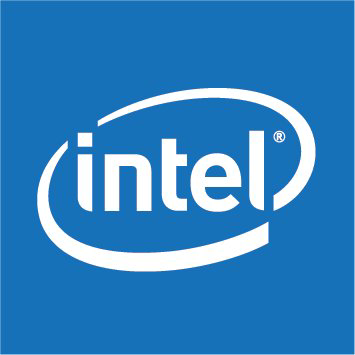The latest issue of JACC provides further in-depth examination of the framework for understanding heart failure with preserved ejection fraction (HFpEF) and guiding treatment through the lens of adipocyte biology and secreted mediators, also…
Blog
-

Italy guarantee World Cup playoff spot with 3-0 win over Israel
UDINE, Italy – Italy beat Israel 3-0 at home on Tuesday thanks to a Mateo Retegui double and a late goal from Gianluca Mancini, securing at least a World Cup playoff berth amid tension between police and some demonstrators at a pro-Palestinian…
Continue Reading
-

Latvia 0-5 England (Oct 14, 2025) Game Analysis
Harry Kane helped fire England to the 2026 FIFA World Cup finals after a 5-0 win against Latvia on a night Thomas Tuchel was teased by fans.
Captain Kane returned from injury to score twice in the first-half amid a remarkable start to the season,…
Continue Reading
-

Engineering next-generation fertilizers | MIT News
Born in Palermo, Sicily, Giorgio Rizzo spent his childhood curious about the natural world. “I have always been fascinated by nature and how plants and animals can adapt and survive in extreme environments,” he says….
Continue Reading
-

Thomson Reuters Continues Driving Legal AI Innovation with Deep Research on Practical Law, CoCounsel Integrations and Global Expansion
TORONTO, October 14, 2025 – Thomson Reuters (Nasdaq/TSX: TRI), a global content and technology company, today announced a new wave of AI-powered innovations that extend the momentum of CoCounsel Legal. The latest enhancements are headlined by the beta launch of Deep Research on Practical Law expanding the organization’s agentic capabilities and deeper integration with trusted Thomson Reuters content.
In addition, deep product integration between CoCounsel and HighQ has launched, and regional expansion of CoCounsel in French, German and Japanese will be available to customers in October.
Deep Research on Practical Law
Deep Research on Practical Law, currently in beta with select customers, is a significant advancement toward the comprehensive, trusted, and seamless CoCounsel Legal research solution of the future. Deep Research on Practical Law plans the research steps, retrieves the most relevant guidance and templates from Practical Law, and presents clear, supported conclusions. It adapts as follow-up questions are asked, enabling deeper, more nuanced analysis.
This streamlined approach saves time, reduces friction, and builds confidence in the resulting work product. As the leading resource for legal know-how content, Deep Research in Practical Law complements Westlaw’s primary-law expertise and supports the evolving needs of legal professionals. Deep Research on Practical Law will be available in the U.S. in the first half of 2026. CoCounsel Deep Research on both Westlaw and Practical Law will be available in the UK in the same timeframe.
“In this dynamic legal environment, continuous innovation is a necessity, and Thomson Reuters is investing more than $200 million a year organically in AI to develop cutting-edge solutions for our customers,” said Raghu Ramanathan, president, Legal Professionals, Thomson Reuters. “Innovative advancements like Deep Research in Practical Law and key CoCounsel integrations empower legal professionals with professional-grade AI to not only navigate this transformative era, but to thrive in it.”
CoCounsel HighQ Integration
CoCounsel’s generative AI capabilities are now integrated into Thomson Reuters HighQ. With more than 1 million users, HighQ is a secure, collaboration and workflow automation platform trusted by law firms, corporations, government agencies and their clients to work seamlessly on legal services. Through CoCounsel’s advanced AI capabilities, HighQ brings generative AI directly into the collaborative workflow between enterprises, allowing legal teams to provide differentiated, AI-powered services that enhance client experiences, improve operational efficiency and create a competitive advantage.
HighQ Document Insights powered by CoCounsel’s document review and summarize capabilities allows HighQ users to understand documents faster, gain critical insights, and pinpoint and extract information at the point of need.
Users can seamlessly access CoCounsel Drafting to review a document, edit, redline it against a playbook and more. This additional integration allows users to leverage their documents in HighQ and eliminate versioning risks and manual uploads, saving significant time on drafting and review tasks.
Self-Service Q&A delivers a new AI-powered chat experience within modernized HighQ dashboards that allows users to ask natural language questions to curated document sets and receive summarized, highly relevant answers in minutes, transforming static repositories into dynamic knowledge hubs.
Global Expansion
CoCounsel is expanding its footprint internationally adding new languages including French, German, Spanish, Portuguese and Japanese. The professional-grade legal AI assistant will be available in France, Benelux/Brussels, Luxembourg and Quebec (French), Germany, Austria and Switzerland (German), Brazil (Portuguese), Argentina (Spanish), and Japan (Japanese) to meet the needs of legal professionals in those regions. CoCounsel is also available in the U.S., UK, Canada, New Zealand, Hong Kong, Southeast Asia and United Arab Emirates.
Additional functionality has been released across multiple legal solutions and is highlighted via the CoCounsel Monthly Insider for October on the Thomson Reuters Innovation Blog.
In the UK, Thomson Reuters will showcase these innovations to customers at Legal Geek in London from Oct. 15-16. According to Thomson Reuters Future of Professionals research, UK legal professionals predict that AI will enable lawyers to save 3 hours per week which translates to an average of over £12,000 in annual value per lawyer based on our comprehensive study. This leads to over £2billion in estimated annual impact across the UK legal industry.
Thomson Reuters customers will get a preview at the Association of Corporate Counsel Annual Meeting from Oct. 19-22, 2025, as well as Corporates and Legal Professionals Synergy 2025 Conference held in Orlando, Fla. from Nov. 9-12, 2025.
Thomson Reuters
Thomson Reuters (Nasdaq/TSX: TRI) informs the way forward by bringing together the trusted content and technology that people and organizations need to make the right decisions. The company serves professionals across legal, tax, accounting, compliance, government, and media. Its products combine highly specialized software and insights to empower professionals with the data, intelligence, and solutions needed to make informed decisions, and to help institutions in their pursuit of justice, truth, and transparency. Reuters, part of Thomson Reuters, is a world leading provider of trusted journalism and news. For more information, visit tr.com.
Contact
Jeff McCoy
+1.763.326.4421
jeffrey.mccoy@tr.comContinue Reading
-

Intel Targets 2026 for Sampling of Crescent Island GPU Built for Next-Gen AI Data Centers
This article first appeared on GuruFocus.
Intel (INTC, Financials) is making another push into the artificial intelligence chip market with its upcoming data center GPU, code-named Crescent Island, which customers will begin testing in the…
Continue Reading
-

Simple Life Lands $35M For AI-Powered Weight Loss
Simple Life is getting smarter.
What’s happening: The London-based behavioral coaching company secured a $35M Series B led by actor Kevin Hart’s HartBeat Ventures to advance AI-powered plans.
Lean machine. Counting 800K…
Continue Reading
-

Advanced labor cesarean birth raises future preterm birth risk
Advanced labor cesarean birth raises future preterm birth risk | Image Credit: © Michael – © Michael – stock.adobe.com.
Scarring in the wound linked to increased preterm birth risk in future pregnancies is 8 times more likely in women with…
Continue Reading
-

YouTube has a new video player
YouTube is updating the look of the video player to be “cleaner and more immersive” beginning this week. “This includes updated controls and new icons to make the viewing experience more visually satisfying while obscuring less content,”
Continue Reading
-

Wall Street’s ‘fear gauge’ surges to highest level since May. Here’s what investors should know.
By Joseph Adinolfi
The revival of the U.S.-China trade war has ended a streak of summer calm that had brought about the lowest volatility since January 2020
The stock market’s “fear gauge” is back above its long-term average.
After one of the quietest summers for the stock market in years, Wall Street’s fear gauge has once again shot higher as investors fret that a trade standoff between the U.S. and China could escalate further.
The Cboe Volatility Index VIX, better known as the VIX, or Wall Street’s “fear gauge,” traded as high as 22.76 on Tuesday, its highest intraday level since May 23, when it traded as high as 25.53, according to Dow Jones Market Data. By the time the market closed, the VIX had moved well off its earlier highs. The index ended the day above 20, a level with some significance.
Since the VIX’s inception in the early 1990s, its long-term average sits just below 20. As a result, investors tend to see this level as the line in the sand between a relatively calm market, and one that is starting to look a bit more panicked.
The level of the VIX is based on trading activity in options contracts tied to the S&P 500 SPX that are due to expire in roughly one month. It is seen as a proxy for how worried traders are about the possibility that stocks could be due for a nosedive. After all, volatility tends to rise more quickly when the market is falling.
A summer lull
Looking back, there were signs that investors were beginning to feel a bit too complacent.
Stocks trundled higher all summer with few interruptions. This placid trading ultimately sent the three-month realized volatility for the S&P 500 to its lowest level since January 2020 last week, according to FactSet data and MarketWatch calculations.
Realized volatility is a calculation that measures how volatile a given index or asset has been in the recent past. The VIX, which measures implied volatility, attempts to gauge how volatile investors expect markets will be in the immediate future.
For a while, the VIX trended lower alongside realized volatility for the S&P 500. But around Labor Day, the two started to diverge.
This could mean a couple of different things, according to portfolio managers who spoke with MarketWatch. The first is that investors increasingly preferred to bet on further upside in the stock market using call options instead of actual shares. Call options on the S&P 500 will deliver a payoff if the index rises above a predetermined level before a given time, which is known as the expiration date.
It might also mean that some traders were scooping up put options, which act like a form of portfolio insurance. Wary of myriad risks that could upset the apple cart following a record-setting rebound earlier in the year, some investors may have preferred to hedge their downside risk, while holding on to their stocks, so as not to miss out on any further gains.
Signs that the market might be bracing for some upcoming turbulence first started to emerge in late September. Between Sept. 29 and Oct. 3, the S&P 500 and the VIX rose simultaneously for five straight sessions. That hadn’t happened since at least 1996, according to an analysis from Carson Group’s Ryan Detrick.
Seeing both the VIX and S&P 500 trend higher hinted that the market’s streak of calm might soon be coming to an end, said Michael Kramer, portfolio manager at Mott Capital Management.
“The tinder was there for something like Friday to occur,” said Mike Thompson, co-portfolio manager at Little Harbor Advisors.
“You just needed that spark to trigger it,” Mott Capital’s Kramer said.
While the U.S.-China trade tensions remain far from settled, Thompson and his brother, Matt Thompson, also a co-portfolio manager at Little Harbor Advisors, are keeping an eye out for any indication that a bigger burst of volatility might lie ahead.
Investors have largely blamed the selloff for the revival of trade tensions between the U.S. and China. On Friday, President Donald Trump threatened 100% tariffs on all Chinese goods imported into the U.S. in retaliation for Beijing stepping up export controls on rare earth metals.
Then on Tuesday, Beijing sanctioned U.S. subsidiaries of a South Korean shipping firm, sparking a global stock-market selloff that had largely reversed by the time the closing bell rang out on Wall Street.
But according to the Thompson brothers, the U.S.-China tariff dance has started to feel a little too familiar for it to be a real cause for concern. Investors appear to be catching on to the pattern of escalation, followed immediately by de-escalation, as each side vies for maximum leverage.
A more plausible threat to market calm, in their view, would be the ructions in the credit market. On Tuesday, JPMorgan Chase & Co. (JPM) Chief Executive Jamie Dimon warned about the potential for more credit problems after the bank lost money on a loan to bankrupt subprime auto lender Tricolor. Trouble in the space could get worse after a long period where conditions in the credit market were relatively favorable.
On Friday, BlackRock (BLK) and other institutional investors asked for their money back from Point Bonita Capital, a fund managed by the investment bank Jefferies (JEF), after the bankruptcy of auto parts supplier First Brands Group saddled the fund with big losses.
“We’re keeping an eye out for whether there is another shoe to drop,” Matt Thompson said.
U.S. stocks were on track to finish mostly higher on Tuesday, until Trump dropped a Truth Social post accusing China of a “Economically Hostile Act” for refusing to purchase soybeans from American farmers. That caused the S&P 500 to finish 0.2% lower, while the Nasdaq Composite COMP ended down 0.8%. Of the three major U.S. indexes, only the Dow Jones Industrial Average DJIA managed to finish higher. Meanwhile, the Russell 2000 RUT, an index of small-cap stocks, quietly notched another record closing high.
-Joseph Adinolfi
This content was created by MarketWatch, which is operated by Dow Jones & Co. MarketWatch is published independently from Dow Jones Newswires and The Wall Street Journal.
(END) Dow Jones Newswires
10-14-25 1642ET
Copyright (c) 2025 Dow Jones & Company, Inc.
Continue Reading
